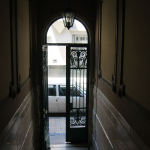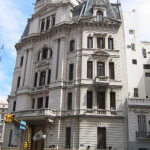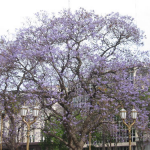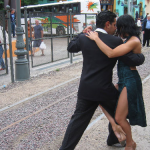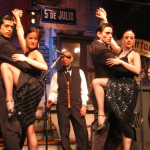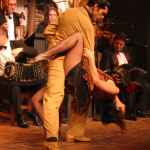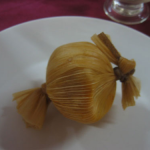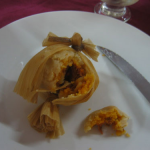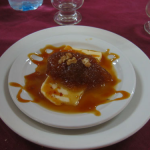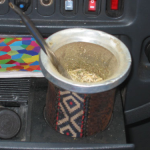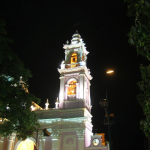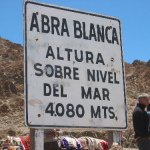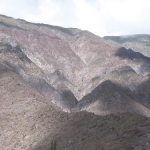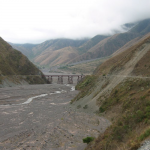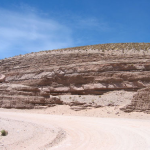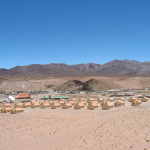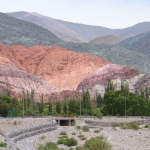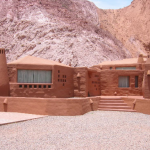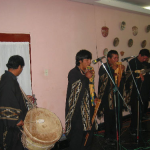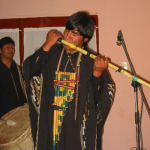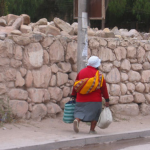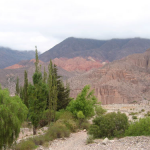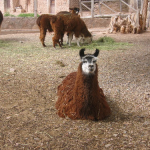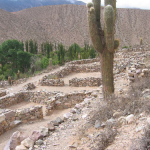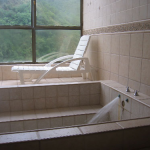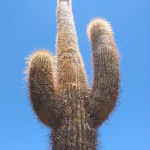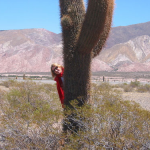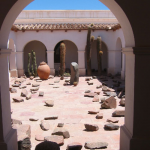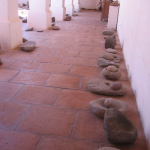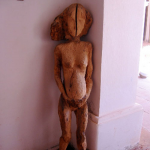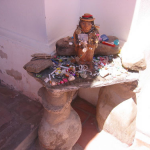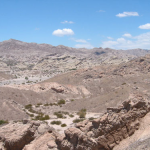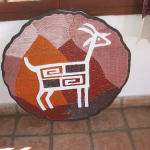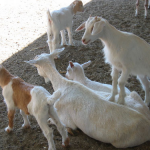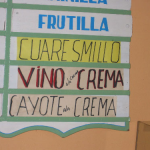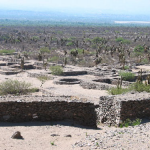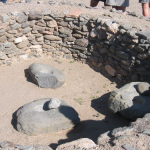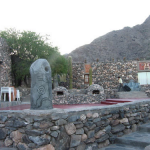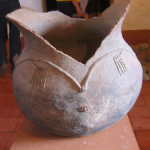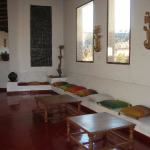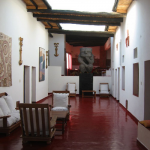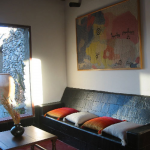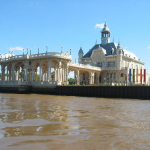Click on any photo in the text to view a larger version
November 2006
Every time I get asked about my trip to Argentina, I feel the need to explain that I was disappointed, not by the county but by how little I saw of it.
It was a fam, but mostly it was an experiment by the organizer who was used to doing trek and cycling tours and wanted to see if he could create a tour for non-athletes. The answer is NO. He unfortunately missed the boat by removing the sports activities without replacing them with something else.
Having said this, we did spend nine days in Argentina and even if we stayed pretty much in the same area the whole time we did get to experiment a bit of what Argentina’s culture is about. This is what I will share with you through my photos and comments.
My first surprise was the length of the flight to get there: it took us 15 hours to get from Montreal to Buenos Aires, the capital, going through New York and Houston, Obviously you have to fly over the US, then Mexico, Central America, then over more than half of South America. Argentina is, with Chile, the most southern country in South America. (I had been reluctant to visit Asia because I was afraid of the long flights…well… no more…I can go anywhere now!)
My second reality check was the fact that although most of us tend to think that South America is inline with North America, in fact the west coast of South America is more in line with Florida than California. Thus, there is no time difference between Quito in Ecuador and Montreal.
As you will see the rest of my pre-conceived ideas were more accurate. Starting with Buenos Aires. I had been told it is the most European of South American cities. It IS very European in Architecture with lots of XIXth century buildings.
There are some large avenues reminiscent of Les Champs Elysées in Paris. The Jacaranda trees were in bloom. Their blue flowers make for a spectacular display.
We stayed in an area called San Telmo, which is pretty artsy. It was coming back from the Plaza Dorrego, where they hold an antiques fair that we got lost on that rainy Sunday…
Another famous neighborhood is La Boca, along the old port. This is where you will find the Caminito, a pedestrian walk named after a famous tango song. . It is very touristy and colorful but photo worthy… There were couples dancing the tango in front of café and restaurants….
Speaking of which…The other big myth that comes to mind when you mention Argentina is the “Tango”. I had attended a class before my trip just to get a feel for it and had been pleasantly surprised. True Argentinean tango is not the brusque, rose between the teeth dance that is often made fun of on TV. It is a very “together” dance, where the female must be attentive to her partner’s slightest move, the dancers are very close and they always move as a pair, it is very sensuous almost languorous at times….
We did get to see a professional tango show, which was more flamboyant than the street dancers but very enjoyable, with great musicians and wonderful costumes.
It was a bit anti-climactic to find out that very few young Argentineans dance the tango nowadays. It seems to be more popular outside the country than in its birthplace…
The third comment you hear about Argentina is how good their meat is. And it IS! especially the beef. They make wonderful “asados” which are similar to a barbecue, where they cook a variety of meat pieces and bring them to the table on a small grill.
Two unique dishes were often served as a first course: the empanada, which is a small, crescent shaped, meat (or cheese) pie. And the tamale, which consists of, corn meal dough filled with meats, cheese and sliced chilies and wrapped in a cornhusk before cooking.
We were told there are many varieties of potatoes in Argentina. Besides the white, the yellow, the red and the blue that we already are familiar with, we got to taste a bright green one that was very fresh tasting.
Another dish that is pretty unique is a dessert that consists of slices of cheese served with a sweet jam. It can be figs, pumpkin, quince…I loved it…but then I love anything sweet.
One last staple in Argentina is Mate. It is a drink made with herbs, a bit like loose leaf tea. You fill a special mate cup with the herbs and pour hot water over them. You refill the water as needed. The drink gets passed around. You drink this through a metal straw. There are etiquette rules about this drink. First of all, if an Argentinian offers you mate you CANNOT refuse. Then it seems there are meanings in the way a woman makes the drink. If it is too sweet or not enough or too hot or again not enough she is sending message to the drinker. Our driver always had a cup at hand.
After a very short stay in Buenos Aires we flew to Salta, which is at the center of an area located in the northwest part of the country, in the Andes. It is a lovely colonial city at 1200 m above sea level. We slept there several nights as we explored the surrounding countryside. Unfortunately we usually got back after sundown so I only have night shots. The Iglesia Catedral, looks like a wedding cake in pink and white…and is reflected in the mirror wall of the building next to it. It faces a busy central plaza where we were witness to rather unusual activities such as what I assume were a transvestite parade, some good old fashion prostitution as well as a lot of homosexuals making out on park benches…
Another landmark building is the Iglesia San Francisco that looks like a theater.
One of the attractions in the area is a train ride called the cloud train. Unfortunately it has been closed down for safety reasons so we followed its path by bus. It provided us with some impressive climbs
and spectacular views. As you can see there are indeed clouds but it is the dry season up there so the riverbeds are empty. Rocks and dust were to be the theme on these trips.
I have never been to the Grand Canyon but I imagine is looks a bit like this.
This village looked like a toy set…missing the plastic trees.
We climbed up a very steep and windy hill to have a look at a pre-Inca site. It took your breath away but not because of the view. All it was were some rocks that seemed to be aligned in what could have been the shape of walls…not convincing…
The next day we drove by an area known as the mountains of the five colors. Various minerals give those colors to the rocks.
We came upon this most unexpected hotel…in the middle of nowhere. It would make a great movie set…
In Tilcara, we got a special treat. A group of musicians, Grupo Chalas, performed for us using traditional instruments. Most of them in the flutes family…I cannot get enough of that sound….
I was a bit starved for colors after all the dust and rocks, so when I saw this woman I could not help but take her picture…. This is not a familiar site in the parts of Argentina that we visited. The same can be said of these vibrant trees.
In Tilcara we visited a park that was half botanical and archeological called Pucara de Tilcara. There was infinity of cacti…but this lama is what caught my eye. I love their haughty expression!
As for the archeological part, it was like the others: rocks piled up to look like walls… I cannot help but wonder how much of it was recently put up…. It is hard to be impressed when there is nothing engraved or sculpted….
Every trip must have a little self-indulgence and this one was a spa called Thermas de Reyes Castle, near the town of Jujuy (pronounced as if you were clearing your throat). Perched on top of a mountain this hotel is almost Swiss looking. The dining room is very grand and elegant. But the real
attraction was these little individual pools filled with scalding water coming directly from the inside of the mountain. Decency forces me to show you an unoccupied one…but you get the picture. You soaked while looking out at the scenery…it was lovely!
We rode through several quebradas (gorges), the most famous being Quebrada de Huamaca and Quebrada de las Flechas. When the scenery is not totally barren, you see cacti dotting the horizon. They grow anywhere, sometimes out of rocks, and can reach amazing heights as you can see…
We stopped in several villages. One of them had a nice little museum that had a collection of stone “utensils”. For once you could see that these were altered to perform a function. In this case probably grinding grains or nuts.
Tucked in a corner was this wood sculpture of a pregnant woman. I have no idea when it dates back to…but I thought she looked lovely. Another female figure that was present in this museum and is very important is the Pacha Mama! She is mother earth, the giver of life. She is extremely respected and probably only second to the Sun. People build altars such as this one and leave her small gifts and offerings. You can see them along the roads and in village squares.
From time to time we could get off the bus to climb up to some nice lookout. It was usually steep and windy.
This is when I felt the effects of altitude the most. I would get short of breath very fast, and dizzy. I did not try chewing coca leaves but I did take to drinking coca tea. Was it my imagination or did the coca really make my headaches disappear? I don’t know but I was thankful. Later in the trip I tried an altitude medication and simultaneously my hands and feet started to tingle… again…was it the altitude or the meds? I quit the meds and the tingling continued…
Our next stop was in the Cafayete area. This is the vineyards region. This being springtime over there, the grapes were very tiny and too delicate to allow us to walk along the rows. But we did get to see their cellars and taste their products.
They have devised a very smart and efficient method of exploiting their natural resources. Close to the vineyards you have goat farms. The goat manure is used as fertilizer for the vines and in turn the grape pulp and pits left over after wine making is fed to the goats. Aren’t they the cutest things? And the local goat cheese is fabulous!
While we are talking food, I must mention an unusual treat: wine ice cream (vino a la crema). It was sweet and creamy, and you could taste something of the wine in it although there was no alcohol. Interesting experience.
The most impressive hotel we stayed at has to be the one located inside the pre-Columbian archeological site of Quilmes. (Yes there is a beer called Quilmes). Located 55 kilometers south of Cafayete, the site itself is worth the visit. It was a fortified settlement covering 30 hectares that supported a population of 5000. Most of it is on the slopes of the Cerro Alto del Rey, with a temple at the top.
Dating from about a.d. 1000, the Quilmes developed autonomously as part of the regional Diaguita/Calchaquí culture, but came under Inka influence in the late 15th century. The Quilmes Indians fiercely resisted the Spaniards who, when they defeated them in 1667, deported the last 2,000 survivors to Buenos Aires, where an industrial southern suburb, known for its beer factory, is their sad legacy.
The architecture of the hotel blends in with the landscape. Notice the medallion on the wall with a crying face. This is an important symbol in South American cultures as it represents rain and rain was essential to agriculture and their survival. It is especially lovely on this piece of pottery.
The design inside the hotel was spectacular also.
Speaking of architecture, this house in Salta made me think of Barcelona.
This trip was about mountains, rocky mountains. This particular area was underwater at some time and is said to be rich in marine life fossils. I can imagine someone diving in this cave….
To celebrate our leaving the Andes we went up to the hill overlooking Salta and shared some bubbly while watching the sun go down.
We eventually flew back to Buenos Aires. On the last day we took the Tren de la Costa (riverside train) to the Parana River Delta. Ninety million tons of sedimentation carried by the Parana river produce an accumulation of land of approximately 20 inches every year, forming the different islands that constitute the Delta region, one of which is Tigre. We took a cruise around Tigre. The water is very brown yet we saw many children playing in it…after cruising the Bosphorous and the Port Canaveral and Miami coasts…this was a bit disappointing. Again, I have the feeling of having missed the best sights of Buenos Aires…
But my trip was not over! I still had some amazing discoveries to make…in ECUADOR (coming very soon to this website!).

